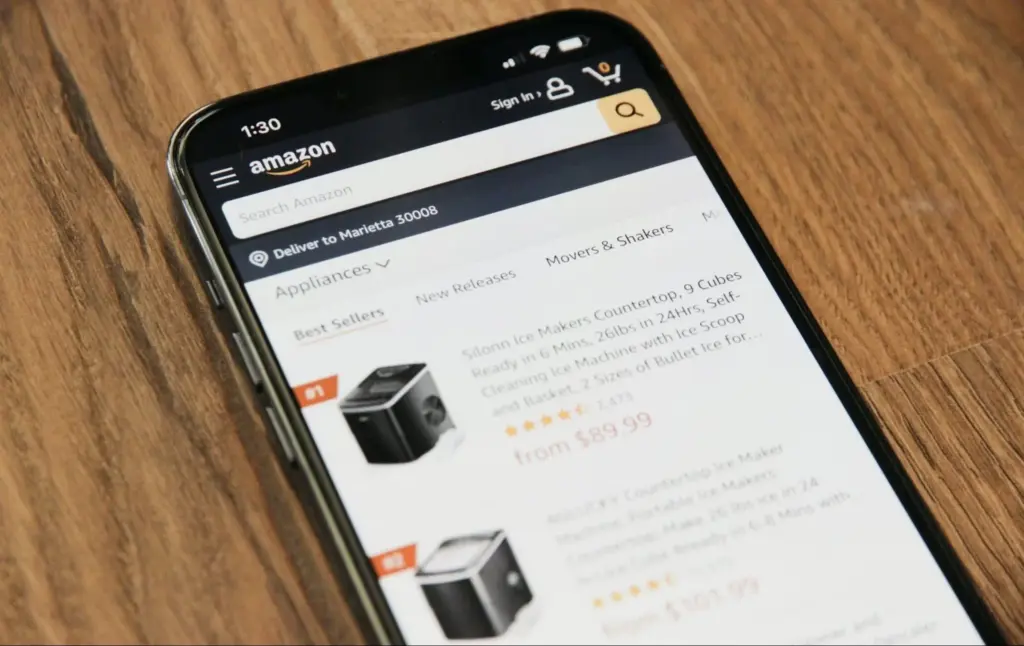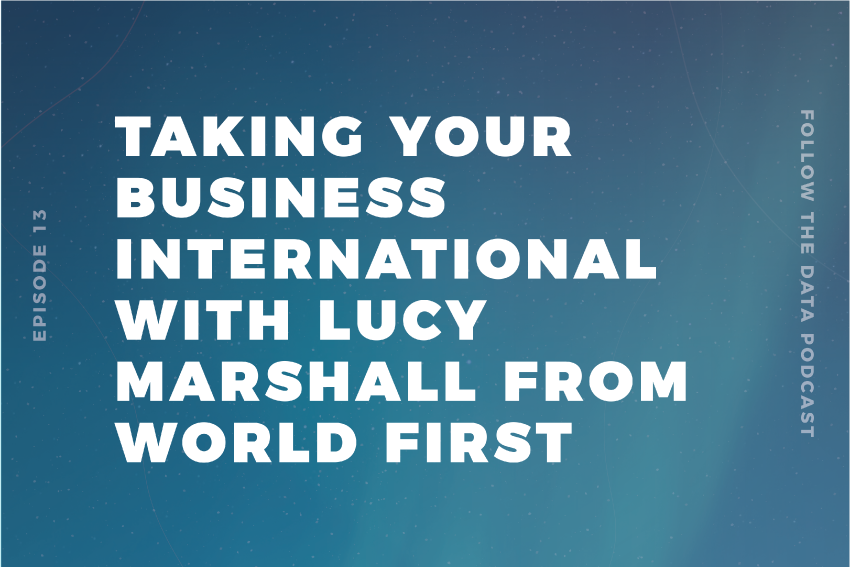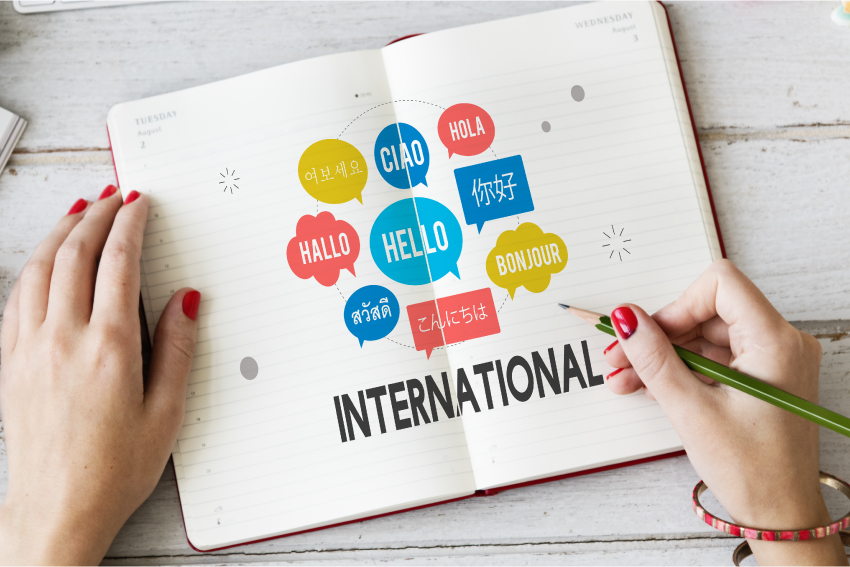Although learning how to sell on Amazon internationally seems intimidating, it could help your shop reach new heights. Shifting from local to international markets is complex yet equally rewarding. If you execute your Amazon global strategy right, you’ll boost your audience size, grow your brand, and increase your profits.
That said, global selling also comes with serious risks. Researching and tapping into foreign markets requires a higher overhead—poor planning will set you back by several grand. In the worst case, your shop might even go bankrupt.
To become a profitable international seller on Amazon, you must overhaul your selling strategy and business approach. Recycling the same tactics will yield negligible results. To jumpstart your research, we made an in-depth guide on Amazon’s international marketplace, the account setup process, and global tax guidelines, among other things you should know.
Breaking Down Amazon’s International Marketplaces
Although Amazon is most popular in the U.S., it pulls billions of shoppers from 100+ countries and regions. The U.S. market only comprises 69% of its platform. Whether you’re looking to start a local or global shop, Amazon can support you.
Starting locally is the safest route. It requires a smaller inventory and targets fewer buyers—you could upload your first listings with just a few hundred bucks. However, your market must also expand as your brand grows.
Local shops typically start by servicing other states. They either explore third-party shipment options or sign up for the Fulfillment by Amazon (FBA) program. Both strategies let you focus on generating sales and marketing your brand. After all, shipping, packing, and preparing products yourself stunts your shop’s overall order capacity.
After expanding to a nationwide market, you might feel more confident about selling on Amazon internationally. However, note that global selling is an entirely different feat.
Varying cultural and economic factors come into play when targeting foreign markets—you must consider them when building your strategies. Otherwise, it’ll be difficult for your brand to attract new customers. There’s never a guarantee that your current business model will succeed, regardless of its performance in the U.S.
5 Steps to Set Up Your Amazon International Seller Account
Here are the steps to set up an international seller account on Amazon:
Step 1: Upgrade Your Amazon Selling Plan
Assess whether you need an Individual or Professional selling plan on Amazon. Technically, Individual selling plans with no LLC can build international listings. Even a startup shop carrying under five products could already enter a foreign marketplace, but their chances of generating positive returns are bad.
You’ll have lower product limits, steep per-item selling fees, and limited selling features on an Individual selling plan. Some argue that these benefits aren’t imperative to success. However, opting out of them puts you at a disadvantage, especially with the tight competition in foreign markets.
The best approach is to get an LLC and upgrade to a Professional plan. Andrew Pierce, the CEO at LLC Attorney, says Amazon sellers should consider LLC filing fees an investment. He says, “Don’t worry too much about the cost of starting an LLC. You’ll need its limited liability protection and tax advantages to mitigate the potential pitfalls of international operations.”
Step 2: Update Your Seller Central Account
Next, update your Seller Central Account. You might have to verify your identity again by resubmitting your valid IDs, tax information, bank account details, and credit card numbers. Amazon has much more strict guidelines for global selling. We’ll talk more about taxes later, but for now, ensure you provide accurate details—even minor inconsistencies could lead to serious legal issues.
Also, prepare for a video call. Amazon often interviews aspiring international sellers, regardless of whether they have an Individual or Professional selling plan. Make sure you have all the necessary documents prepared beforehand to make the verification process easier.
Step 3: Research Your Target Markets
Create a preliminary list of countries and regions that you want to target. You can narrow down your options as you do more research bus staring off you should assess which markets would respond well to your business model. Ideally, you should be familiar with the local culture, consumer habits, and competition.
Step 4: Choose Your Fulfillment Strategy
Assess which fulfillment strategy to use. There are generally two options: Fulfillment by Amazon (FBA) and Fulfillment by Merchant (FBM). Let’s weigh their pros and cons.
Fulfillment By Amazon (FBA)
Amazon handles storage, packing, and shipping of orders. Sellers need to send inventory to Amazon’s warehouses on a regular basis.
Cost structure:
- Individual Selling Plan: $0.99 per item sold.
- Professional Selling Plan: $39.99 monthly fee.
Ideal for:
- Advanced sellers with steady sales.
Considerations:
- Additional fees for fulfillment ($7.35 per unit) and storage ($0.87 per cubic foot).
- Not cost-effective for sellers learning to expand internationally, as fees can reduce profits.
Fulfillment by Merchant (FBM)
With Fulfillment by Merchant (FBM), you’re 100 percent responsible for packing and shipping all your orders. You have the option to choose cheaper third-party service providers.
Important considerations:
- Beware of untrustworthy providers offering misleading promotions.
- Research and select trusted professionals.
- Suitable for sellers who prefer more control over shipping and handling processes.
Step 5: Set Up Your Shipping Rates
Set your ideal shipping rates after deciding on your fulfillment method. They should cover all the costs of storing, packing, and shipping orders—strive to maintain your profit margins and increase your profits.
You also have to consider that high shipping fees are unappealing. Many consumers abandon their online carts at checkout pages because of the extra costs their orders incur. Even out any losses in shipping fees by slightly increasing your product prices.
Pro tip: Buyers are more likely to push through with their purchases if you provide multiple shipping options.
Product Selection and Localization

Here are some tips to help you find winning products in foreign markets:
Study Social Media Trends
Go beyond keyword analytics. Studying social media trends helps you predict what items have the potential to go viral. Look for up-and-coming products with evergreen potential. If a winning item has already gone viral and is available in thousands of shops, it might be too late to hop on the trend.
Michael Maximoff, the co-founder and managing partner at Belkins, advises shops to study social media sites their target market uses. He says, “Collect data from platforms your ideal buyer persona frequents. Let’s say you target Gen Z shoppers. Instead of downloading Facebook analytics, you could run campaigns on their favorite apps, like Snapchat, Instagram, and X.”
Invest in Product Research Tools
Look into product research tools. AI-driven platforms can collect insights on all the listings within your preferred niche—focus on analyzing data and making informed decisions.
Invest into product research tools for effective product selection and localization. These tools offer several key benefits for international sellers:
- Global Market Insights: Understand trends and consumer behaviors in different international markets.
- Cultural Adaptation: Identify products that can be adapted or localized to suit the preferences of specific regions.
- Demand Prediction: Predict potential demand for various products, aiding in strategic inventory management.
- Localization Strategies: Customize your product offerings to meet the specific needs and tastes of local markets.
- Mitigate Risk in New Markets: Reduce risks when entering new international markets by making data-informed decisions
Order Samples for Personal Testing
Test items yourself before uploading listings. See if the actual product matches the images and description you see online—nothing turns away buyers faster than misleading ads. Don’t worry about losing money during the testing phase. Instead, focus on finding quality products from trusted suppliers so that you can earn back your initial investment fast.
Communicate With Suppliers Directly
Strive to work with suppliers directly. Having multiple middlemen oversee your transactions increases the risk of inefficiencies and miscommunication. Also, they’ll slow down the decision-making process.
Robert Kaskel, Chief People Officer at Checkr, points out that with time, it is impossible to avoid business expansion. “New personnel will come along with the need for a task delegation. You must teach them to communicate, set priorities, and see what is urgent to decide and what requires your direct approval. Still, when the business is a beginner, it may be good practice for a business owner to talk with suppliers firsthand.”
Partner With Local E-Commerce Experts
Consider working with local e-commerce experts. Analyzing industry trends, consumer behavior, and market movements delivers cold, hard numbers, which will definitely improve your product research. However, contextual analysis sets you apart from the competition. Look for a local marketing expert who can give first-hand insights into what listings might perform well in their region.
International SEO and Content Strategies for Amazon
Apply these SEO and content strategies to boost your international Amazon shop’s visibility:
Research Ranking Keywords
Conduct separate keyword research for your target markets. Ranking terms and phrases will vary per region—carelessly recycling your SEO results will only waste your ad spend. You should consider local trends and cultural nuances. Also, use SEO tools that carry reliable Amazon consumer data on the regions you wish to target.
Localize Product Listings
Localize your Amazon product listings. Apart from translating them to your target market’s local language, you should also adjust their titles and ad descriptions based on cultural nuances. Let’s say you’re an American home furniture shop tapping into the U.K. market. Instead of using American terms like couch, faucet, or vacuum, you should use their British counterparts: sofa, tap, and hoover.
Post Geo-Targeted Content
Like your Amazon listings, localize all the blogs, videos, infographics, and posts you’ve published online. Ensure they meet your foreign shoppers’ needs. Provide accurate translations, adjust key figures, and address local preferences. The process might take time, depending on how much content you have, so consider hiring a native-speaking copywriter instead of doing everything yourself.
Adjust Hreflang Tags
Use hreflang tags to help search engines index your multilingual pages accordingly. They’ll guide SERPs on what language translation to show based on the location of your site visitors. For instance, your Amazon listings could automatically appear in Mandarin for Chinese shoppers.
Embed Real-Time Currency Converters
Embed real-time currency converters into your Amazon pages. Apart from showing the correct language translations, your listings should automatically convert prices to your site visitors’ local currencies. Ensure you use the correct conversion rates. Also, specify if foreign shoppers have to shoulder any extra fees so that they’ll know what to expect before checking out their carts.
Research Cultural Context
Before publishing any piece of content online, research its cultural context. Even seemingly minor errors like misspelling or misusing words could lead to misinterpretations, especially when delivering analogies, metaphors, and jokes. The best approach is to consult a native speaker beforehand. Shoppers are more likely to respond to your targeted campaigns if they resonate with your content.
Familiarize Yourself With Amazon’s A9/A10 Algorithm
At a basic level, Amazon’s A9 and A10 algorithm dictates what listing shoppers see. They track consumer habits, analyze their activities, and push suggestions based on their typical preferences.
The system is automated and unbiased, but you can utilize it to your advantage if you know how A9 and A10 segregate listings. Generally, you’ll gain better visibility if you use phrases your target market uses.
Establish Your Social Media Presence
Expect to overhaul your online presence when targeting new regions. Having an existing following boosts reputability, but you’ll still have to build an entirely new customer base. Otherwise, your Amazon global expansion won’t yield results.
Apart from publishing localized, geo-targeted content, you should also engage with your online audience. Answer questions, respond to compliments, and address recurring issues. You can ask your native-speaking copywriter for help if you can’t speak your target market’s local language yet.
Tip: Recycling old marketing strategies rarely yields results. We suggest signing up for online digital marketing courses to explore what tactics your new audience might potentially find appealing.
Track and Analyze New Metrics
Set custom performance metrics for every market you target. Consumers from various regions will react differently to your campaigns and e-commerce tactics—you shouldn’t lump them into one universal group. Otherwise, you’ll generate inaccurate, unreliable results, thus weakening your future campaigns.
Tip: Use social media marketing tools to streamline data analysis. Gathering and analyzing insights from multiple platforms will eat up several hours daily, which you could spend on other tasks.
How to Navigate Customs, Taxes, and International Regulations
Before you build international listings, familiarize yourself with the international regulations on customs and taxes. Too many businesses overlook these aspects. If you’re careless, the extra fees could drive up your overhead and tank your profit margins. Here are some general reminders to follow:
- Consult a local tax expert: Every country has its own set of tax and customs guidelines. It’s best to consult a local professional who can guide you through their country’s complex taxation systems.
- Obtain the necessary permits: Apart from starting an LLC, you might have to obtain other foreign licenses and permits. Some regions are stricter than others.
- Check the taxes levied on your product category: Ask your partner broker about the taxes imposed on your specific niche and industry. As a general rule, high-risk categories get taxed the highest.
- Always label your goods properly: You could get accused of smuggling if you ship products that are incorrectly labeled and categorized. Again, taxes vary per product category.
- Switch to FBA: If you don’t want to bother yourself with the complex taxation guidelines of foreign countries, sign up for FBA. Again, it’s a pretty costly service. But it could be worth the investment if offloading your taxation duties will save you massive resources.
Check out this comprehensive guide on Amazon seller taxes to ensure you’re compliant.
Marketing and Advertising on Amazon Global Store
Manually tracking data, managing social media profiles, and uploading listings becomes much more time consuming as you enter foreign markets. Invest in new technologies that will streamline daily processes, such as:
Keyword Analytics Trackers
Google’s Keyword Planner breaks down its top-ranking SERPs, but it doesn’t analyze site-specific SEO keywords. Carelessly applying its findings to your listings will yield negligible results. As an aspiring international seller on Amazon, you need a keyword tracker that exclusively targets and analyzes listings within the platform.
Competitor Monitoring Systems
In-depth competitor analysis can help you find winning products while minimizing the resources needed for A/B testing. Learn from the mistakes and wins of others. Set your tool to gather the total sales of rival brands, see which listings generate a positive ROI, and assess if you can emulate their success.
But this isn’t to say you should jump on every popular product. Look for ones in a general upward trend with manageable competition and avoid trendy items in saturated markets.
AI-Driven Listing Generators
Manually uploading hundreds of listings in multiple language translations could take weeks. To speed up things, use AI-driven listing generators instead. Sophisticated language models can create coherent, engaging listings and comply with Amazon’s ToS. Don’t blindly jump at cheap, fast solutions.
A/B Split Testing Platforms
Although competitor analysis gives you insights into the top listings sitewide, you can’t solely rely on it for market research. You’ll still have to run A/B tests yourself. After narrowing down your prospective listings, start selling in small, manageable quantities. The goal of A/B testing isn’t to turn a profit, but to assess the short- and long-term profitability of specific products.
PPC Management Systems
Managing multiple campaigns in foreign markets by yourself is impractical. You’ll end up wasting hours sifting through data, comparing results, analyzing performance metrics, and gathering listing insights. PPC management is a full-time job. The best approach is to offload the task to your employees and equip them with the necessary tools for support.
Max Wesman, the founder & COO of GoodHire, also reminds marketers that managing PPC campaigns alone compromises accuracy. He says, “Don’t skimp out on PPC management. You might save a few bucks doing it manually, but you’ll also increase the risk of misinterpretations and incorrect calculations. They’ll ultimately stunt your efforts to scale operations.
Manage International Customer Reviews and Feedback
As we mentioned before, your Amazon listings will gain better visibility if they contain reviews and feedback in your market’s local language. Here are some tips to encourage positive feedback:
Request Reviews Early and Often
It’s important to regularly request reviews to enhance the visibility of your Amazon listings, especially those with content in your market’s local language. Keep in mind, however, that Amazon’s policies strictly prohibit incentivizing reviews. Instead, focus on timely and frequent requests for feedback. Promptly asking customers for their thoughts after a purchase can significantly increase the likelihood of receiving reviews, providing valuable insights for both potential customers and your business.
Address Negative Feedback Properly
Stop ignoring negative feedback. We understand that some comments are unreasonable and nasty, but you must still address them. Dismissing undesirable comments comes across as irresponsible. In fact, longitudinal research shows that half of consumers expect brands to respond to negative queries within an hour. Otherwise, they might not push through with their purchases.
Likewise, address hateful people with class. Instead of stooping down to their level and insulting them, lay down facts disproving their accusations. Your qualified buyers aren’t naive. They won’t believe every negative statement against your brand as long as you defend yourself.
Hire Native Speakers To Answer Comments
Consider hiring native speakers to answer comments on your behalf. While AI chatbots and translators are cheap and accessible, they’re also prone to more mistranslations. You shouldn’t risk further offending already disgruntled customers.
Now Your Ready Sell on Amazon’s International Markets
There’s no cookie-cutter solution explaining how to sell on Amazon internationally. You should create a custom strategy that suits your goals, addresses your target market’s needs, and aligns with your budget. Also, it’s normal for your first few scaling attempts to fail. Establishing an e-commerce brand in new markets can take months or longer. Be sure to set reasonable expectations, or else you could end up disappointed.
Don’t worry if you’re still confused about how to sell on Amazon. Again, it requires elaborate planning. Instead of diving into global selling alone, partnering with the experts at Viral Launch will increase your chances of success. They provide new and advanced sellers with cost effective solutions for sellers looking to start or expand internationally on Amazon’s marketplace.







